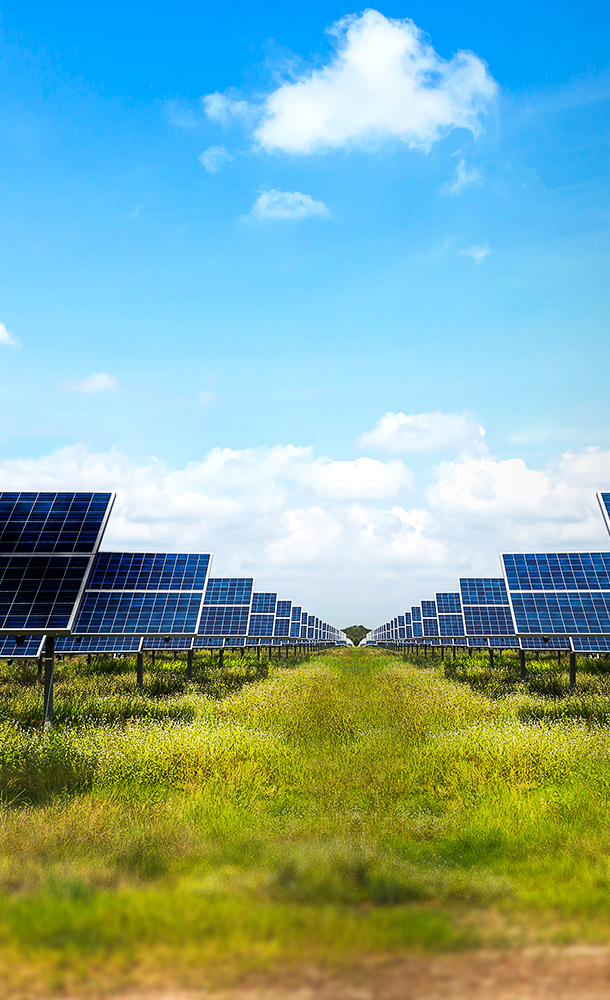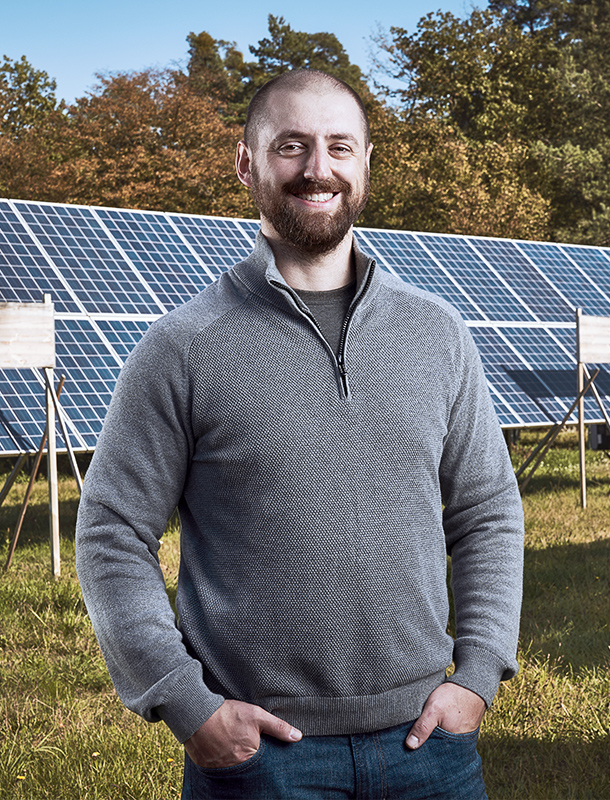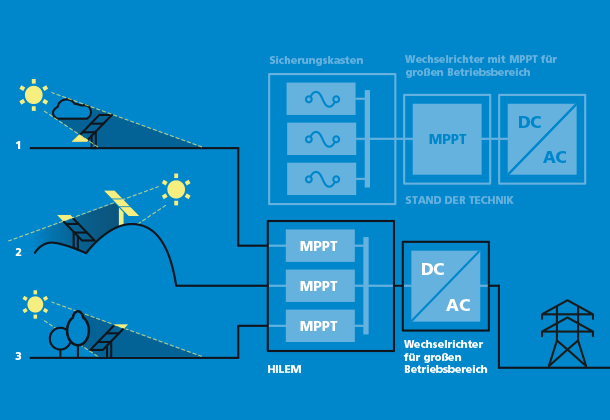As soon as one part of a series-connected solar system is in the shade, the current flow of the complete string is minimized. Sergej Koch wants to remedy this situation with an effective string combiner and maximize the output of large photovoltaic systems.

Anyone owning a garden hose knows following phenomenon: if there is just one bend, no water gets through. It is comparable to the electricity in a photovoltaic system whose solar modules are connected in series. If just a single cell of that module is shaded by a cloud or adjacent trees, for example, the internal resistance in that cell increases, slowing down all the cells in the array and reducing the output of the entire string. "As a result, solar plants often experience high losses on a daily average, up to 15 percent on a cloudy day," explains Sergej Koch, a scientist at the Electrotechnical Institute (ETI) of KIT.
"Instead of building bigger systems, my approach is to optimize existing systems. In this way, I want to contribute to the energy turnaround and give new impetus to the rather sluggish expansion."
For smaller systems, such as those on house or industrial roofs, so-called maximum power point trackers (MPPT) are installed per string, which optimize the power of the strings and compensate for voltage differences – caused by shadows, for example – between them. However, this has not yet been economically viable for large-scale systems, as the additional yield achieved would be less than the cost of the components. Therefore, often only one MPP tracker is used for several strings. This tracker uniformly controls how much energy is drawn for all strings, which results in some strings being overloaded while others could produce significantly more power.
Together with Prof.. Marc Hiller and Ph. D. Mario Gommeringer, Sergej Koch realized that, with the help of an improved circuit, it could be quite economical to install one MPP tracker per string, even for large-scale systems. This is how the idea of the HILEM string combiner was born – an acronym for High Efficiency Low Effort MPP. This circuit can balance and maximize the power output of a theoretically unlimited number of photovoltaic strings among themselves when environmental conditions fluctuate. The strings are then combined with a control concept developed specifically for this purpose, and the power is transmitted to the power grid via an inverter. "Thus, in the future, there will be no need to compromise between yield loss and economic topology," the scientist explains.
To demonstrate the feasibility, a test system with three strings and an output of 3kW per module was set up at the institute. According to Koch, this clearly demonstrated the benefits of HILEM: "The efficiency of the HILEM circuit is 99.8 percent, which is in the range of current string combiners. If we now reduce the cost of HILEM and increase the extra yield gained, we can offer an extremely interesting economic alternative." In addition to the increase in output, HILEM offers another advantage: the reduced power fluctuations on the input side also reduce the load on the inverter to a minimum. Consequently, a less complex and therefore less expensive inverter can be used. In addition, the wear of the system is reduced and the aging of the modules is counteracted, which is realized by reduced heat generation.
For the validation of the circuit, a technology transfer preliminary project was launched in summer 2019. The goal of this project is to achieve field operability with an upscaled 25kW HILEM module. "Once it is validated that the circuit also works on a large scale, we want to bring our idea to the market. A follow-up project is already planned for this purpose to cooperate with several industrial partners and universities," Koch said. "In doing so, we hope to help make Germany an important part of the solar value chain again."


